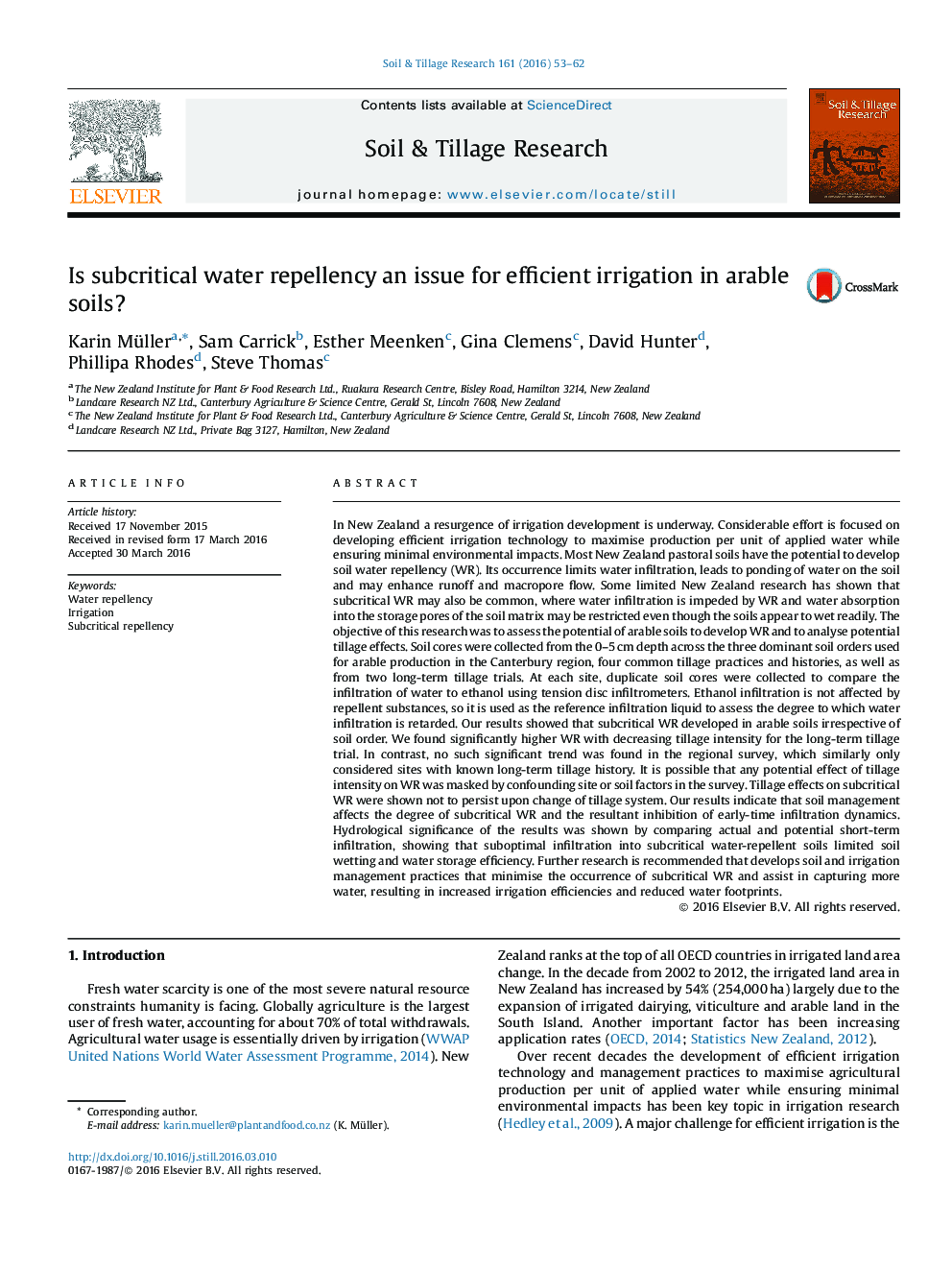| Article ID | Journal | Published Year | Pages | File Type |
|---|---|---|---|---|
| 6773413 | Soil and Tillage Research | 2016 | 10 Pages |
Abstract
In New Zealand a resurgence of irrigation development is underway. Considerable effort is focused on developing efficient irrigation technology to maximise production per unit of applied water while ensuring minimal environmental impacts. Most New Zealand pastoral soils have the potential to develop soil water repellency (WR). Its occurrence limits water infiltration, leads to ponding of water on the soil and may enhance runoff and macropore flow. Some limited New Zealand research has shown that subcritical WR may also be common, where water infiltration is impeded by WR and water absorption into the storage pores of the soil matrix may be restricted even though the soils appear to wet readily. The objective of this research was to assess the potential of arable soils to develop WR and to analyse potential tillage effects. Soil cores were collected from the 0-5Â cm depth across the three dominant soil orders used for arable production in the Canterbury region, four common tillage practices and histories, as well as from two long-term tillage trials. At each site, duplicate soil cores were collected to compare the infiltration of water to ethanol using tension disc infiltrometers. Ethanol infiltration is not affected by repellent substances, so it is used as the reference infiltration liquid to assess the degree to which water infiltration is retarded. Our results showed that subcritical WR developed in arable soils irrespective of soil order. We found significantly higher WR with decreasing tillage intensity for the long-term tillage trial. In contrast, no such significant trend was found in the regional survey, which similarly only considered sites with known long-term tillage history. It is possible that any potential effect of tillage intensity on WR was masked by confounding site or soil factors in the survey. Tillage effects on subcritical WR were shown not to persist upon change of tillage system. Our results indicate that soil management affects the degree of subcritical WR and the resultant inhibition of early-time infiltration dynamics. Hydrological significance of the results was shown by comparing actual and potential short-term infiltration, showing that suboptimal infiltration into subcritical water-repellent soils limited soil wetting and water storage efficiency. Further research is recommended that develops soil and irrigation management practices that minimise the occurrence of subcritical WR and assist in capturing more water, resulting in increased irrigation efficiencies and reduced water footprints.
Keywords
Related Topics
Physical Sciences and Engineering
Energy
Renewable Energy, Sustainability and the Environment
Authors
Karin Müller, Sam Carrick, Esther Meenken, Gina Clemens, David Hunter, Phillipa Rhodes, Steve Thomas,
